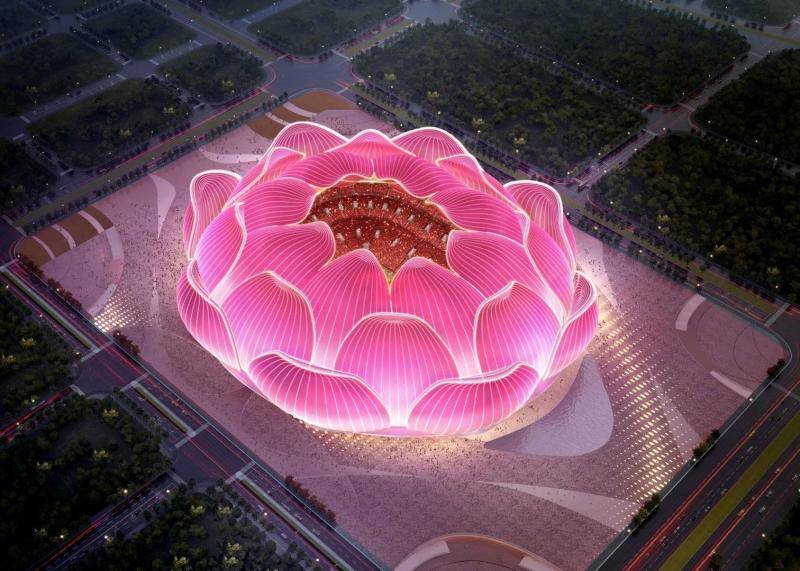
Chinese Super League (CSL) side Guangzhou Evergrande have begun to build the largest football-only stadium in the world.
The new Evergrande Stadium will be holding 100,000 in capacity and 168 VIP boxes, which st expected to complete by the end of 2022.
The most iconic thing about the stadium is that it was designed like a lotus flowers shape.
The Shanghai-based American designer Hasan Syed ironed out the final look of the stadium, following an initial concept from the Evergrande Group chairman Xu Jiayin.
Xia is concerned on the lack of top-class football-only stadiums in the country that can host international events such as the World Cup.
That is why, the new Evergrande stadium will be the first of the many stadiums that will be build around 80-100,000 capacities around the country.
“Evergrande Stadium will become a new world-class landmark comparable to the Sydney Opera House and Burj Khalifa in Dubai, and an important symbol of Chinese football to the world,” Xia said.
“We hope the stadium will host the opening ceremony of the 2023 Asian Cup.”
Eight designs, from the United Kingdom, Australia and the United States, were submitted before Evergrande made the decision to go with the entry from Shanghai-based American designer Hasan Syed.
With 168 VIP boxes and 16 VVIP boxes, this brand new stadium could play a part in the newly-expanded FIFA Club World Cup that was due to take place in China next year.
Since being taken over by Evergrande in 2010, the team have won eight Chinese Super League titles and two Asian Champions League titles.
The club play at the city-owned Tianhe Stadium with a capacity of 58,500, attracting an average crowd of just under 46,000 in the 2019 season.
Approximately 12 billion yuan (£1.36 billion) will be invested into the project.
This also means Evergrande Stadium will be surpassing Camp Nou as the largest football-only stadium in the world that is owned by a football club.
Only the Rungrado 1st May Stadium with an athletics track in North Korea, the Dallas Cowboys’ AT&T Stadium in United States and Melbourne Cricket Ground in Australia hold bigger capacities.

